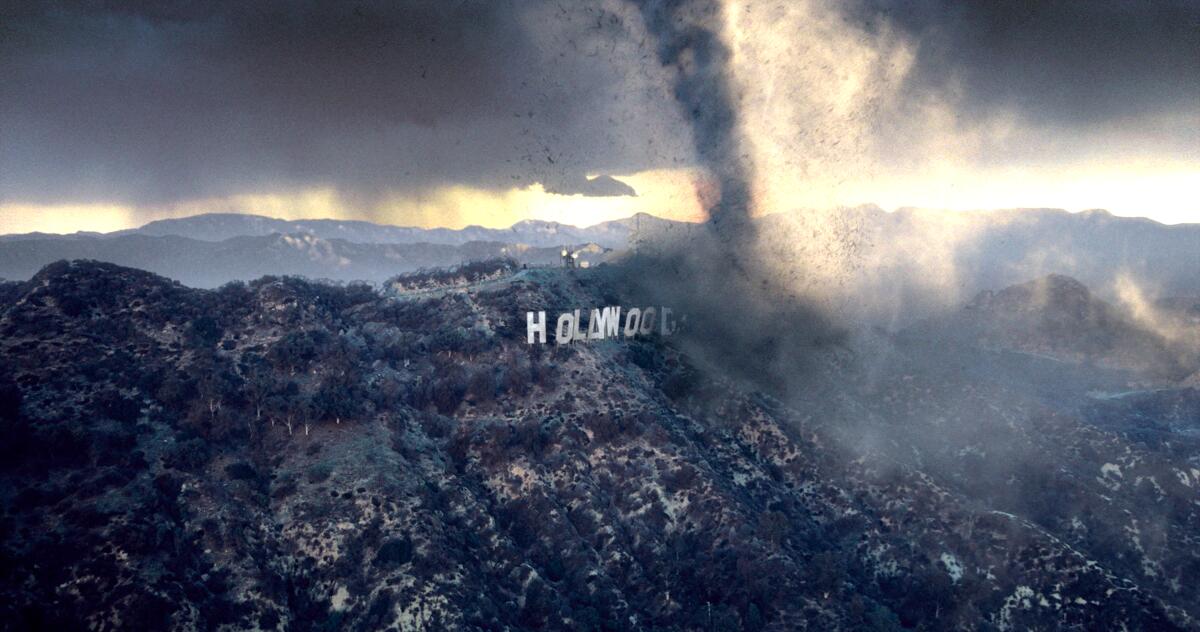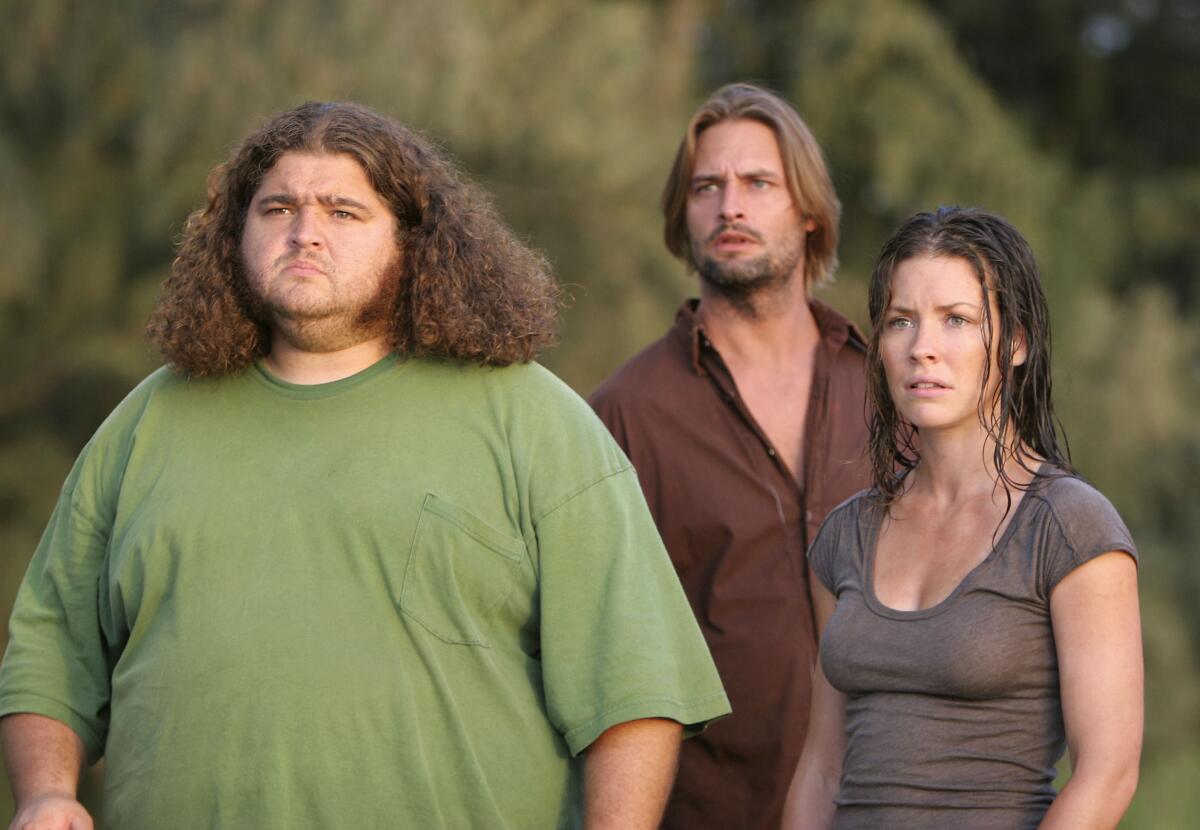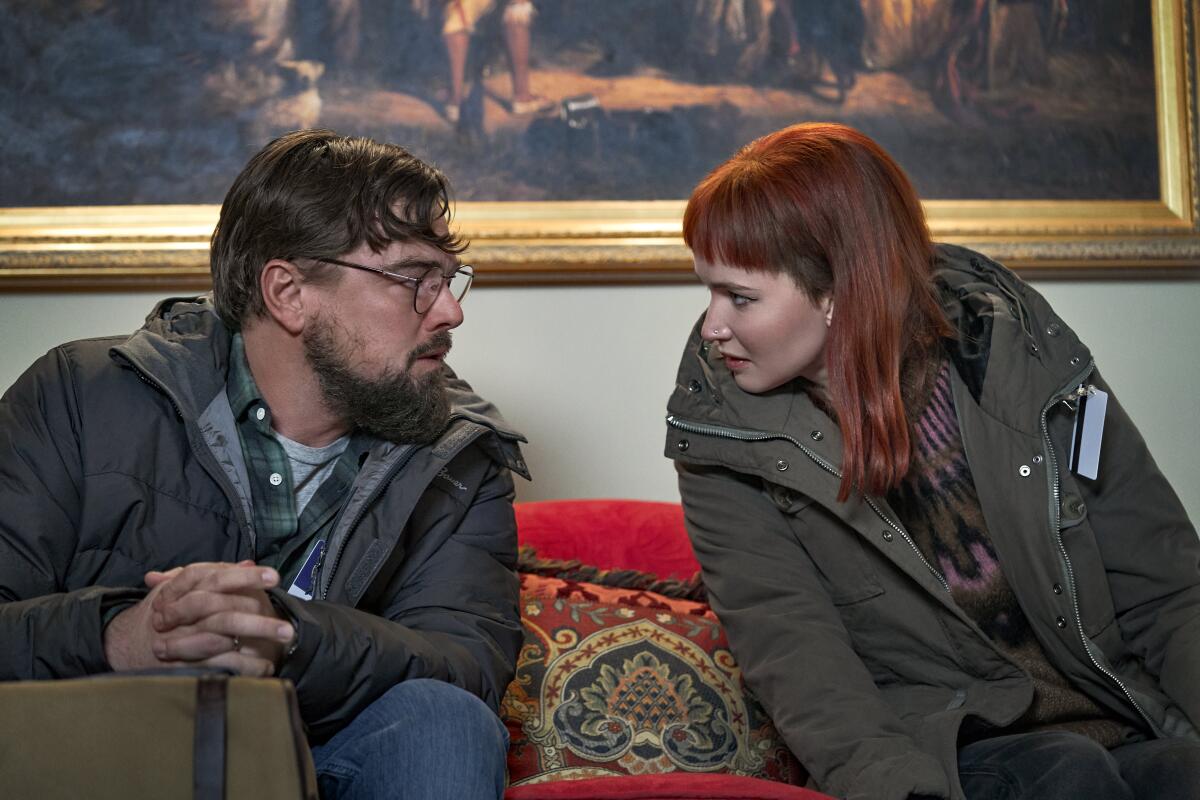Column: Where is climate change on film and TV? There’s now a Bechdel test for that

- Share via
Let’s say you’re heading to the movie theater to catch a quirky romantic comedy. Or you’re on Disney+ bingeing the latest Marvel superhero show after work. Or maybe you’re looking for a Netflix documentary about international cuisines.
Are any of those stories truly grounded in reality if they don’t at least nod at the existence of the climate crisis?
I can already hear some of you grumbling: Why does everything have to be about climate change? Let me have some fun without having to worry about the fate of the planet. Not all entertainment needs to be a vehicle for environmental messaging.
Agreed. But some of it should be — and now we have a tool for pressuring Hollywood studios to do their part.
You're reading Boiling Point
Sammy Roth gets you up to speed on climate change, energy and the environment. Sign up to get it in your inbox twice a week.
You may occasionally receive promotional content from the Los Angeles Times.
You may be familiar with the Bechdel test, which measures representation of women in films and other works of fiction. Basically, a story passes the Bechdel test if it includes two female characters having a conversation about something other than a man.
As of today, there’s a Bechdel test for global warming.
It’s called the Climate Reality Check, and it was developed by nonprofit consulting firm Good Energy and a researcher at Maine’s Colby College. A story passes the test only if it’s clear through the events being portrayed on screen, on the page or onstage that global warming is happening — and only if at least one character demonstrates that they know it’s happening.
The Climate Reality Check’s designers applied the tests to this year’s Oscar-nominated movies. Of the 13 fictional, feature-length films set in present-day or near-future Earth, three passed the test: “Barbie,” the latest “Mission: Impossible” and “Nyad.”
To me, that’s not very many. To Good Energy, it’s a great start.
Anna Jane Joyner, the consulting firm’s founder and chief executive, reminded me of a USC report, which her firm funded, finding that just 2.8% of scripted television episodes and films released from 2016 through 2020 included any mention of climate change (or a long list of related keywords). Three out of 13 Oscar nominees is a small sample, but a lot better by comparison.
Not only that, but “Barbie” and “Mission Impossible” were two of the most popular and critically acclaimed films of 2023.
“Oscar nominees seem like they’re trending in the right direction,” Joyner said.
If you saw “Barbie” and are struggling to remember the climate change reference, you’re probably not alone.

As determined by the Colby College students who worked with English and environmental studies professor Matthew Schneider-Mayerson to tabulate climate references in this year’s Academy Award nominees, it’s the scene where teenage Sasha (played by Ariana Greenblatt) unloads her frustration on Margot Robbie’s Barbie, telling her, “You set the feminist movement back 50 years, you destroyed girls’ innate sense of worth, and you’re killing the planet with your glorification of rampant consumerism.”
At first, I was skeptical that this was really about climate. Consumerism takes many forms.
But when I pressed Schneider-Mayerson, he made a compelling counterargument. Although “killing the planet” could in theory refer to plastic pollution or the ozone layer, context matters. For a film released in 2023, he said, his students decided there was no way that “killing the planet with your glorification of rampant consumerism” couldn’t be considered a climate reference.
Schneider-Mayerson hopes the Climate Reality Check “takes off and becomes viral,” serving as a tool for screenwriters to hold themselves accountable and for audiences to advocate for more climate stories. He’d like to see it applied to novels, plays and video games.
“Stories are not frivolous or mere entertainment. Stories are how we make sense of the world,” he said.
I couldn’t agree more, which is why I keep returning to this topic, the climate-entertainment nexus.
We live in a highly polarized, hyper-fragmented world, where it’s hard to motivate people to action and even tougher to change their minds. If you don’t believe global warming is real — or if you accept that global warming is real but nonetheless don’t care about it especially much — there’s not a lot anyone can do about it, even publishing truly great climate journalism.
Hollywood is one of the few exceptions.
If studios could start normalizing climate and clean energy as a thing that people talk about and care about — not just through climate-focused sagas like the Apple TV+ series “Extrapolations, but through quick, casual references in stories that otherwise have nothing to do with the environment — they could go a long way toward saving the planet.
I’m talking quick shots of rooftop solar panels getting installed, or fake-meat hamburgers getting eaten, or electric cars getting charged. If “Lost” were being made today — I spent six years recording a “Lost” rewatch podcast, so this is kind of my jam — I’d advise Damon Lindelof to feature a shot of Sawyer reading Bill McKibben’s classic 1989 climate novel, “The End of Nature.”

Those are the kinds of touches the Good Energy folks have in mind, too.
“The psychological value of just hearing a character mention climate change in passing is very important,” Joyner said. “The purpose of this test is not in any way to reflect that we want climate to be the central focus for all stories.”
Joyner and her colleagues would like to see 50% of scripted films and TV shows set in present-day or near-future Earth pass the Climate Reality Test by 2027. That could mean more scenes with news broadcasters describing unprecedented heat waves, and characters attending climate protests. Maybe even sporting events getting postponed due to wildfire smoke.
Good Energy developed the two-part test — 1) “Climate change exists,” and 2) “A character knows it” — after interviewing more than 200 screenwriters, showrunners, executives and others involved in storytelling. They wanted the test to be fun, easy to use and not prescriptive — meaning, it doesn’t tell writers how they should incorporate climate themes into their stories.
“A writer will often shut down if we say, ‘You should approach it like this,’” said Carmiel Banasky, Good Energy’s editor in chief.
Thus far, Hollywood studios have mostly told climate stories that promote specific solutions or warn of specific disaster scenarios, such as “How to Blow Up a Pipeline” or “Don’t Look Up.” That helps explain why Good Energy developed a Climate Reality Check that was “the most invitational version that we could think of,” as Banasky put it. Their goal was to invite writers to include climate “in a way that’s not shoehorned in, in a way that’s connected to character, in a way that enhances the story world.”
Banasky cited Sasha’s “rampant consumerism” line in “Barbie,” describing it as “one of the most Sasha-esque lines in the film.”
“It doesn’t feel forced in any way,” she said.
I’ll be fascinated to see if Hollywood power players take this seriously. They should, even if they care only about profits.
“If climate change doesn’t exist in your story right now, audiences will feel that,” Banasky said.

For a gut check, I ran the Climate Reality Check past Cyle Zezo, an unscripted TV producer and former vice president and head of alternative programming at the CW network. He founded the group Reality of Change, which is working to facilitate awareness of climate change and sustainability in unscripted TV. He’s also on the board of advisors of the Hollywood Climate Summit.
Zezo told me via email that he likes the simplicity of the Climate Reality Check, which should make it easy for writers, executives and others to assess their projects and discuss changes. He appreciates that the test sets “a baseline from which to build.”
He also wants studios to recognize that passing the Climate Reality Check “represents a bare minimum standard.” I agree completely — acknowledging that global warming is real should be “ a starting place,” not “an end goal,” as Zezo put it.
“Knowing Good Energy, they’ll always be fighting for the bigger picture, so any caution on my end is focused more on how this tool is utilized by the wider industry, to avoid a circumstance where it becomes the destination rather than a launchpad,” he said.
Zezo also noted the potential risk of Hollywood executives or other industry stakeholders claiming they’ve solved the problem of climate representation on screen by taking too broad an interpretation of what counts as a global warming reference.
“If that storm that ruined the date in the movie isn’t specifically identified as the result of an atmospheric river caused by climate change, what makes it different from any other storm?” Zezo asked.
Good question. It will be up to all of us who care about climate to take our TV shows and movies seriously, and to demand that the people making them give us what we want — which is stories that help make the world a better place.
We should have more data at our digital fingertips soon.
Schneider-Mayerson, the Colby College professor, is working on another analysis applying the Climate Reality Check to 250 of the most popular films of the last decade. This analysis will include several other intriguing metrics, including which directors had the most films that passed the climate test and whether Marvel or DC Comics had more films that passed the test.
Schneider-Mayerson expects the report to be ready in April. I’ll have more details then.
And by the way, if you’re wondering how “Nyad” and the latest “Mission Impossible” passed the Climate Reality Check?
I didn’t see either film, sorry to say. But according to Good Energy, a character in “Mission Impossible” warns Tom Cruise’s Ethan Hunt that the next world war will be “a ballistic war over a rapidly shrinking ecosystem ... a war for the last of our dwindling energy, drinkable water, breathable air.” In “Nyad,” Annette Bening’s Diana Nyad is trying to swim from Cuba to Florida when she’s stung by a box jellyfish. Other characters blame the jellyfish’s unexpected presence in this part of the ocean on global warming.
It’s a small thing. But a journey of a thousand miles starts with a single jellyfish.
ONE MORE THING

If any of you happen to know acclaimed film director Jason Reitman, could you give him a message for me?
Reitman directed “Juno” and “Up in the Air,” two of my favorite movies. He also co-wrote “Ghostbusters: Frozen Empire,” which is coming out later this month, and which if the trade-press headlines are to be believed will have a climate change angle.
My message is this: Jason, do you want to host a climate-focused event timed to the premiere of your film, perhaps at the historic Village Theater in Westwood that you and a bunch of other directors just purchased? I grew up a 10-minute walk from the theater and love the place. I’d be happy to moderate a discussion, ideally connecting the fantastical themes of “Frozen Empire” to the real climate challenges we face. I recently did something similar at the Academy Museum of Motion Pictures, and it went great.
So, Jason: We on?
This column is the latest edition of Boiling Point, an email newsletter about climate change and the environment in California and the American West. You can sign up for Boiling Point here. And for more climate and environment news, follow @Sammy_Roth on X.
Toward a more sustainable California
Get Boiling Point, our newsletter exploring climate change, energy and the environment, and become part of the conversation — and the solution.
You may occasionally receive promotional content from the Los Angeles Times.






